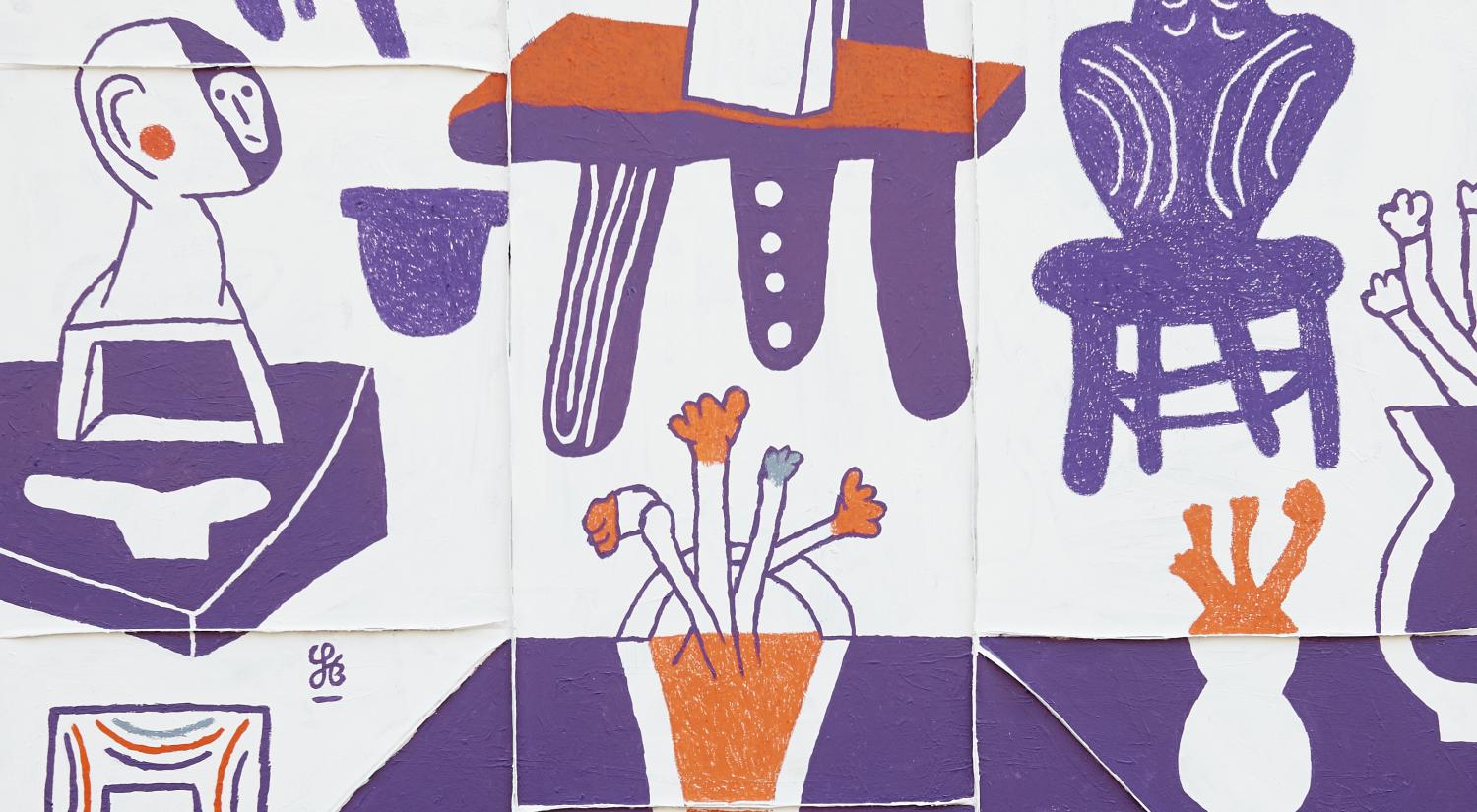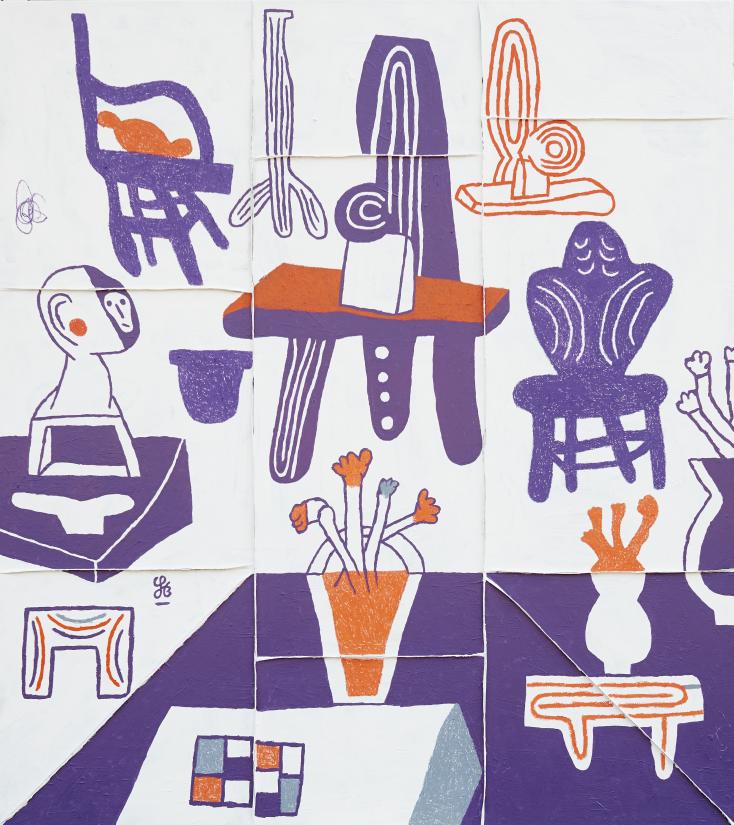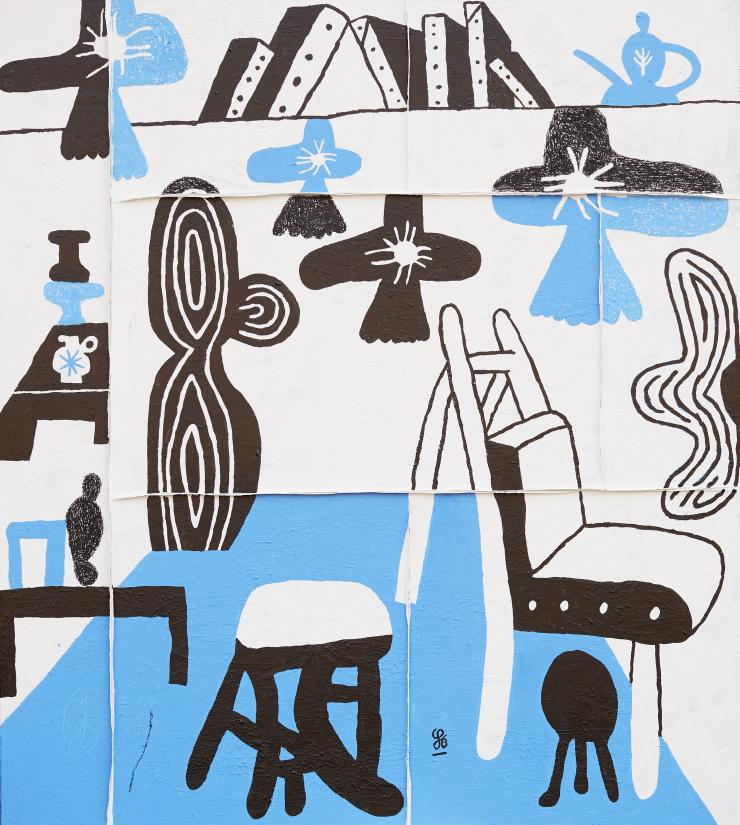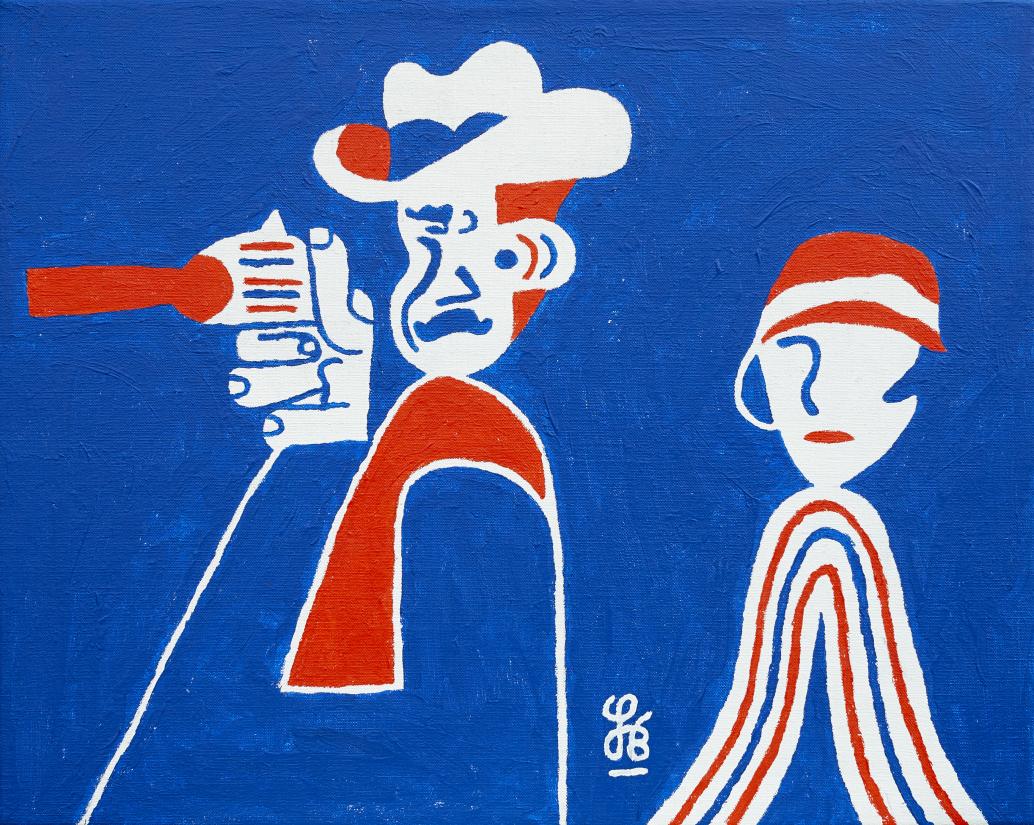For the exhibition The White House at the Museum of Art Brundlund Castle, Søren Behncke produced a new suite of paintings inspired by material from Franciska Clausen’s (1899–1986), which is now located at the museum. Søren Behncke, who had his breakthrough in the 1990s under the alias Papfar (literally ‘cardboard dad’, a Danish term for stepfather) with his cardboard sculptures, has always been fascinated by the avant-garde painter, and in connection with the exhibition he was able to delve into Clausen’s archive and enter into a dialogue with the material. With support from the New Carlsberg Foundation, three of Behncke’s Franciska pieces have now been added to the art museum’s permanent collection.
Figuration and abstraction
Behncke’s paintings explore the boundaries between figuration and abstraction. They take their point of departure in three photographs of Francisca Clausen from the museum archive. In the paintings the photos are addressed in a new idiom, where the recognizable photographic images are transformed into abstract graphic forms. With the photographic model at hand, however, the abstract forms become recognizable and thus revert to figurative representations in the viewer’s mind. For example, in the painting Atelier Ciska (Studio Ciska), which is based on a photo of Franciska Clausen’s studio in the Danish city of Aabenraa, a vase of flowers stands in for a bunch of paint brushes in a jar, and a geometric pattern becomes a colour palette.
Collection in a new light
The Museum of Art Brundlund Castle houses Denmark’s biggest collection of Franciska Clausen’s paintings, sketches and photographs, which her descendants have handed over to the museum as a permanent loan. By using photographs from Clausen’s archive as the point of departure Søren Behncke enters into an artistic dialogue with the museum’s collection.
About Søren Behncke
Søren Behncke was born in 1967 in the Danish city of Sønderborg and originally trained as a graphic designer. For many years, he exhibited under the alias Papfar and is known for using cardboard as his preferred material for sculptures and installations. Today Behncke lives and works in Copenhagen, and he is represented in several collections, including the art museums ARoS, KØS and Vejle Art Museum as well as the collections of Aabenraa Municipality, Aarhus Municipality and the Danish Arts Foundation.






